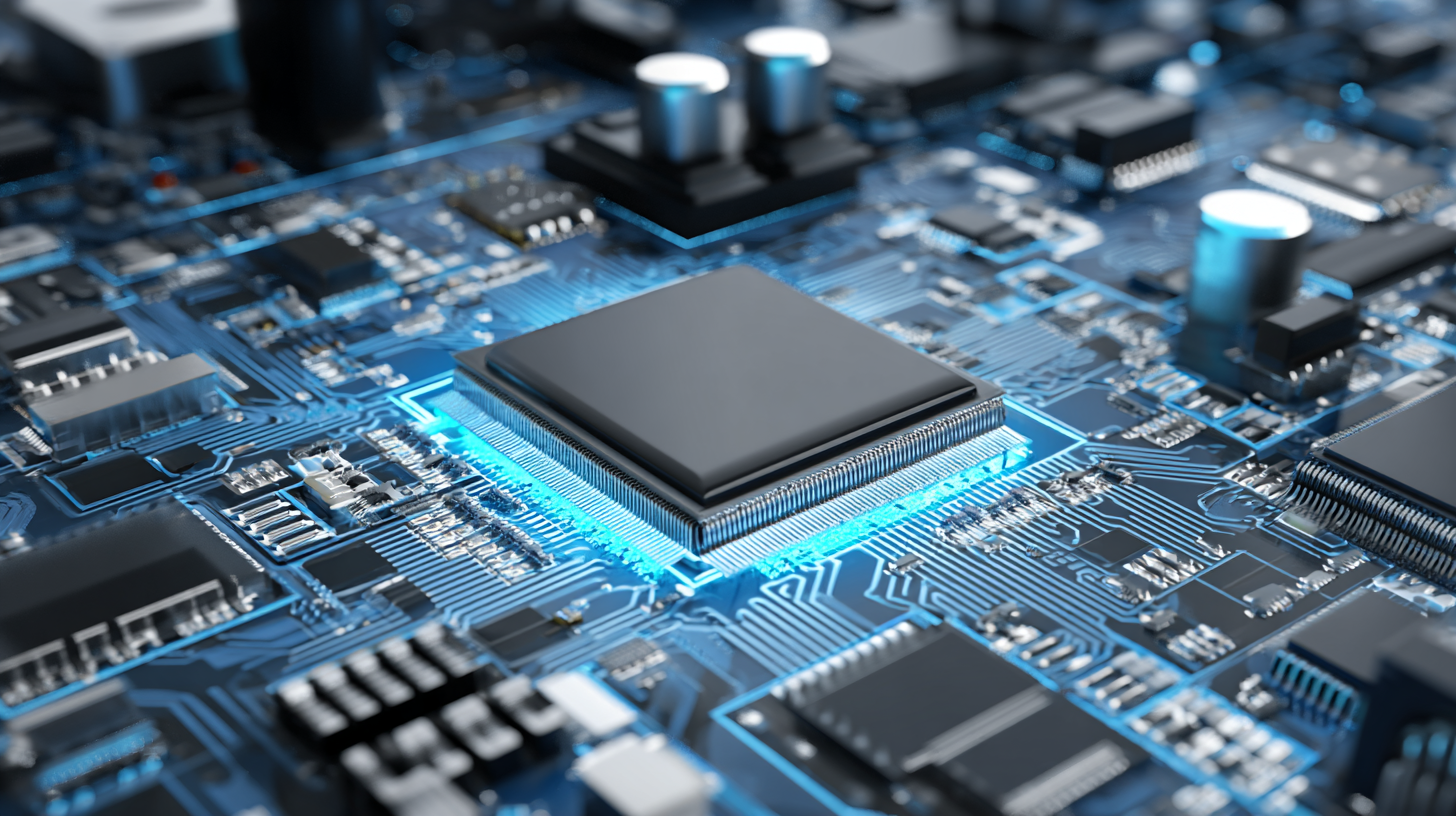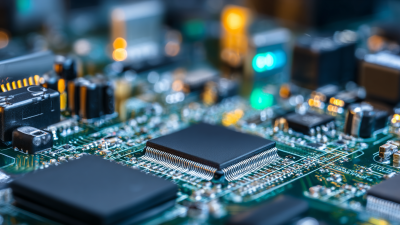The landscape of PCB fabrication in the USA is evolving rapidly, propelled by advancements in technology and an increasing demand for high-quality electronic components. According to a report by IPC, the global PCB market is expected to reach $83 billion by 2025, with the USA playing a significant role in this growth due to its emphasis on innovation and quality assurance. Understanding the essential steps in PCB fabrication USA is crucial for manufacturers aiming to maintain competitive advantages in this thriving sector. From design and material selection to production processes and testing, each phase is instrumental in ensuring that the final product meets industry standards and customer expectations.

As the complexity of electronic devices continues to rise, mastering these steps will empower companies to deliver superior PCB solutions tailored to the needs of various industries, including telecommunications, automotive, and consumer electronics.
The design and layout of printed circuit boards (PCBs) are critical stages that significantly influence the efficiency of their fabrication. According to a report by IPC, 75% of PCB manufacturing issues originate from design errors. Therefore, a well-structured design process is essential to mitigate manufacturing delays and enhance product quality. This begins with selecting the appropriate substrate materials and defining the physical layout, taking into account the electrical requirements and thermal management considerations.

Furthermore, employing design software tools such as Altium Designer or KiCAD can streamline the layout process. A report by Research and Markets indicates that the PCB design software market is projected to grow by 5.3% annually, reflecting the increasing complexity of electronic devices requiring advanced design capabilities. Integrating automated design rule checks within the tools can help identify potential issues early in the design phase, thus reducing the need for costly revisions later. Adequate planning in these key stages empowers engineers to produce efficient, reliable PCBs that meet the high standards demanded by modern electronics.
When it comes to PCB (Printed Circuit Board) manufacturing in the USA, selecting the right materials is a crucial step that can significantly influence the performance and reliability of electronic devices. According to a report by IPC, nearly 70% of PCB fabrication issues stem from material selection, demonstrating just how vital this process is. Common materials used in PCBs include FR-4, a flame-retardant glass-reinforced epoxy laminate, which accounts for around 90% of the market share for rigid PCBs due to its excellent thermal stability and electrical insulation properties.
Beyond FR-4, manufacturers are increasingly exploring advanced materials like Rogers and Teflon substrates for high-frequency applications. As per the market analysis by Research and Markets, the use of high-frequency PCBs is projected to grow at a CAGR of 8.5% through 2027, driven by advancements in telecommunications and aerospace sectors. Moreover, the emphasis on sustainability is pushing manufacturers to adopt eco-friendly materials, aligning with recent regulatory pressures and consumer demand for greener products. These trends underline the importance of material selection in ensuring not just performance but also compliance and sustainability in PCB manufacturing.
| Material Type | Properties | Common Applications | Cost (per sq. ft.) | Availability |
|---|---|---|---|---|
| FR-4 | Flame Retardant, Good Dielectric Properties | Consumer Electronics, Industrial, Automotive | $2.00 | Widely Available |
| Polyimide | High Temperature Resistance, Flexible | Aerospace, Medical Devices, Flex Circuits | $5.00 | Moderately Available |
| Rogers Material | Low Loss, High Frequency Performance | RF Applications, Microwave Circuits | $10.00 | Specialty Available |
| Aluminum | Excellent Thermal Conductivity | LED Lighting, Power Electronics | $8.00 | Readily Available |
| CEM-1 | Economical, Good Mechanical Strength | Simple Circuits, Toy Electronics | $1.50 | Widely Available |
The fabrication of printed circuit boards (PCBs) involves several essential production techniques, pivotal for ensuring reliability and performance in modern electronic applications. Among these techniques, etching and laminating stand out as critical processes. Etching serves to define the circuitry by removing unwanted copper, while laminating is vital for layering materials to create multilayer boards. The evolving landscape of PCB fabrication is increasingly influenced by the introduction of new materials, such as glass substrates, which promise enhanced stability and thermal performance, meeting the demands of next-generation packaging.
As the PCB industry continues to grow, especially in markets such as China, the move towards advanced materials demonstrates a shift that could redefine production methods. This shift is fueled by trends in technology development, such as 5G and AI, which require higher-density and more efficient heat dissipation solutions. Companies are investing in advanced PCB production techniques to meet these demands, highlighting a global competition in innovation and quality assurance that is crucial for maintaining market leadership in this highly technical field.
This chart illustrates the time spent in hours for each essential step in the PCB fabrication process, showcasing the significance of different production techniques such as etching and laminating.
In the realm of PCB fabrication, quality control measures play a pivotal role in ensuring the reliability and performance of the final product. Effective quality control begins with rigorous material selection; only high-grade components should be utilized to minimize defects during the manufacturing process. Implementing standardized processes, such as clearly defined protocols for etching and layering, can significantly enhance the consistency of PCB outcomes.
Regular verification of equipment calibration also ensures that the machinery operates within specified tolerances, further safeguarding the integrity of the produced boards.
Furthermore, in-line inspections are essential throughout the various stages of PCB fabrication. These inspections not only identify issues early on but also help in refining processes for better efficiency. Advanced testing techniques, such as Automated Optical Inspection (AOI) and X-ray inspection, allow for comprehensive analysis of the PCBs before they are shipped to customers. By adopting these quality control measures, manufacturers in the USA can assure their clients of the reliability and durability of their PCBs, ultimately fostering trust and enhancing brand reputation in a competitive market.
Environmental considerations play a crucial role in PCB manufacturing, particularly in the USA, where regulatory standards and consumer awareness are increasingly demanding. Best practices in this area start with the choice of materials. Manufacturers are encouraged to use eco-friendly substrates and lead-free solder to minimize toxic waste. Moreover, the incorporation of recyclable materials in the production process not only reduces environmental impact but also aligns with the circular economy's principles.

In addition to materials, water and energy management are vital aspects of eco-friendly PCB fabrication. Implementing closed-loop water systems can significantly reduce water waste, while energy-efficient manufacturing processes help lower carbon footprints. Automation and smart technologies should also be considered to optimize resource usage and minimize emissions. By adopting these best practices, PCB manufacturers can contribute to a more sustainable industry, ensuring compliance with environmental regulations while also appealing to eco-conscious consumers.






| Cookie | Duration | Description |
|---|---|---|
| cookielawinfo-checkbox-analytics | 11 months | This cookie is set by GDPR Cookie Consent plugin. The cookie is used to store the user consent for the cookies in the category "Analytics". |
| cookielawinfo-checkbox-functional | 11 months | The cookie is set by GDPR cookie consent to record the user consent for the cookies in the category "Functional". |
| cookielawinfo-checkbox-necessary | 11 months | This cookie is set by GDPR Cookie Consent plugin. The cookies is used to store the user consent for the cookies in the category "Necessary". |
| cookielawinfo-checkbox-others | 11 months | This cookie is set by GDPR Cookie Consent plugin. The cookie is used to store the user consent for the cookies in the category "Other. |
| cookielawinfo-checkbox-performance | 11 months | This cookie is set by GDPR Cookie Consent plugin. The cookie is used to store the user consent for the cookies in the category "Performance". |
| viewed_cookie_policy | 11 months | The cookie is set by the GDPR Cookie Consent plugin and is used to store whether or not user has consented to the use of cookies. It does not store any personal data. |